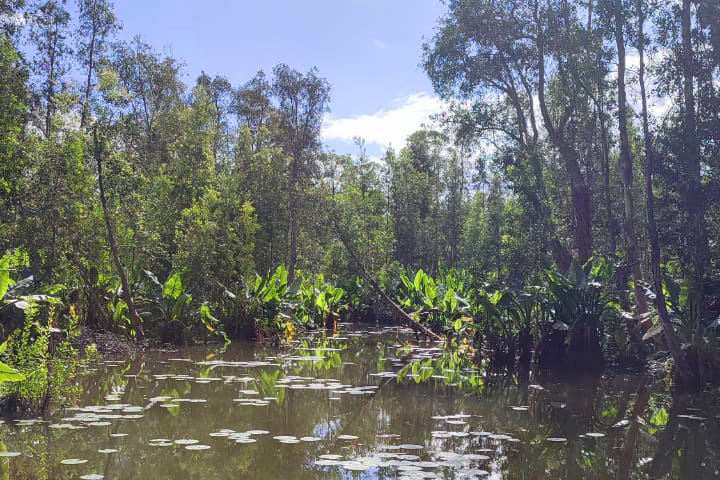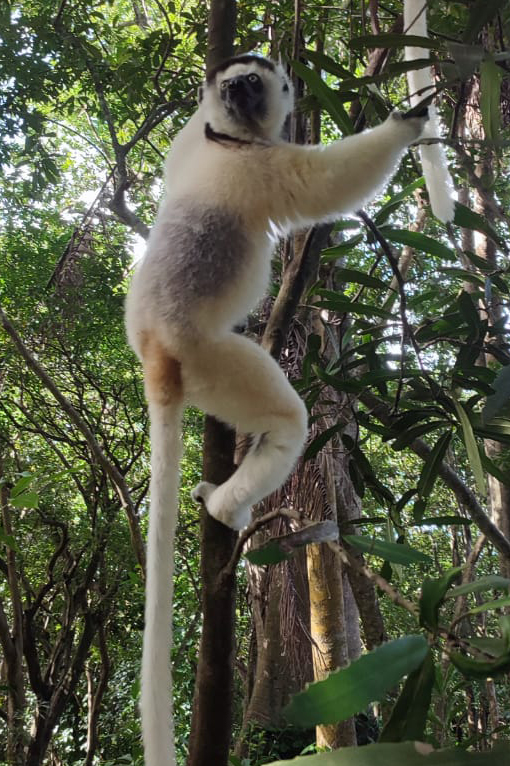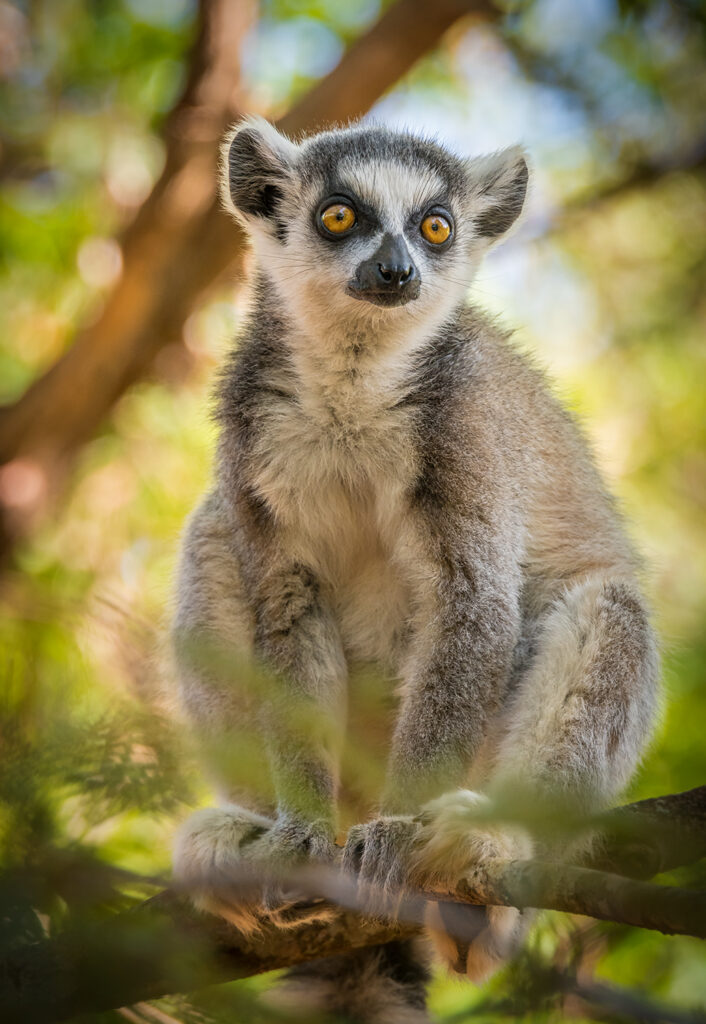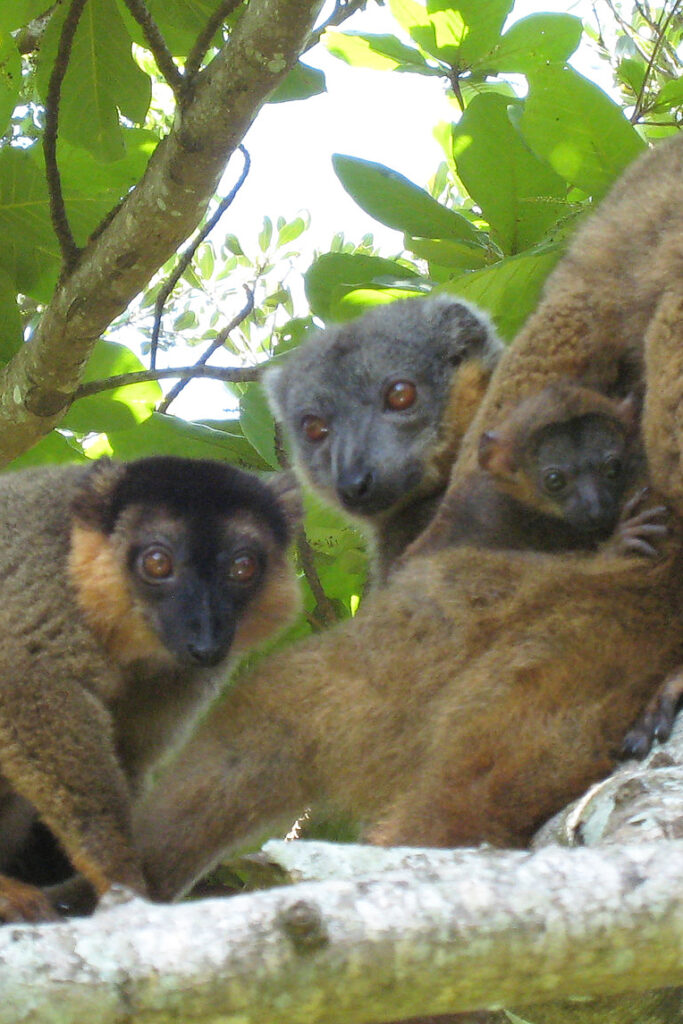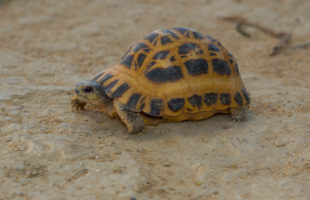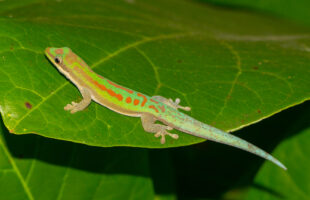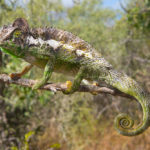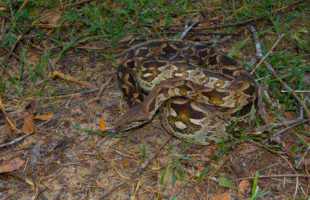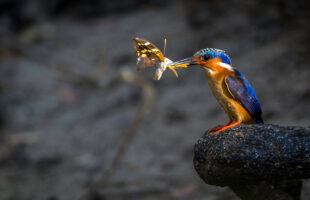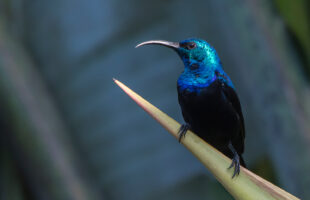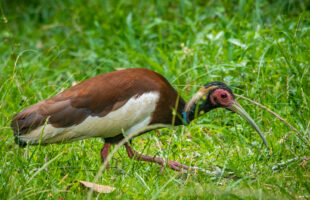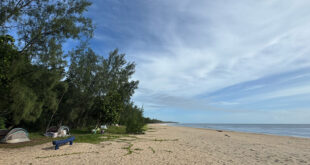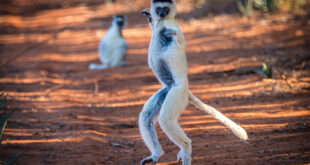Location:
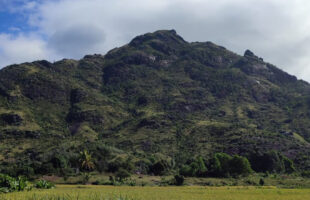 The Nahampoana reserve is located around seven kilometres north of Tolagnaro (French: Fort Dauphin) in the deep south-east of Madagascar. It can be reached from there via the RN12 in half an hour on an dusty track in an off-road vehicle. Tolagnaro can be reached by car from the capital Antananarivo within three days by car, but the journey is practically off-road, especially on the last hundred kilometres, and depending on the time of year can be difficult to calculate. Domestic flights directly from Antananarivo to Tolagnaro are more practical and save time. Taxibrousse are not recommended, especially in the south of Madagascar.
The Nahampoana reserve is located around seven kilometres north of Tolagnaro (French: Fort Dauphin) in the deep south-east of Madagascar. It can be reached from there via the RN12 in half an hour on an dusty track in an off-road vehicle. Tolagnaro can be reached by car from the capital Antananarivo within three days by car, but the journey is practically off-road, especially on the last hundred kilometres, and depending on the time of year can be difficult to calculate. Domestic flights directly from Antananarivo to Tolagnaro are more practical and save time. Taxibrousse are not recommended, especially in the south of Madagascar.
Information about the protected area:

At just 0.67 km², the reserve is one of the smallest protected areas in Madagascar. It consists of rainforest, bamboo forest and mangroves at the foot of the Pic St. Louis, the picturesque mountain backdrop of Tolagnaro. It was originally established around 1900 as a botanical garden (‘jardin d’acclimatisation’) with indigenous plants and numerous useful plants. This part of the reserve is still maintained and cultivated today. It was later turned into a commercial forest before Nahampoana became a reserve in the 2000s. The reserve is privately owned by the travel agency Air Fort Services.
The paths through the reserve are mostly flat and fairly easy to walk on, but sturdy shoes are recommended. There are circular trails for short visits as well as longer stays – there should be something to suit every visitor. A beautiful waterfall and several natural bathing areas are perfect for refreshment in the heat. A highlight is the boat trip on the Lanirano River, which is Malagasy for ‘empty water’. The office is located directly on the RN12, where entrance tickets can be purchased and a local guide can be booked.
Climate:
The south-east of Madagascar is very warm all year round, with temperatures above 30°C being the norm. During the relatively long dry season from the end of March to October, it gets very cool at night with temperatures plummeting to over 20°C. During the rainy season, it is very humid and consistently warm. During the rainy season, it is very humid and consistently warm. Long clothing and plenty of sun cream should therefore always be part of your basic equipment in Nahampoana.
Infrastructure:
The nearby coastal town of Tolagnaro offers accommodation for every budget and in every size. From upmarket lodges with sea views and white sandy beaches to simple rooms with shared toilets, there is something for everyone. Restaurants and numerous shopping facilities are of course also available in the city. In the reserve itself, there are just eight rustic bungalows (electricity only available to a limited extent via solar panels, no hot water) and a restaurant that is used when required.
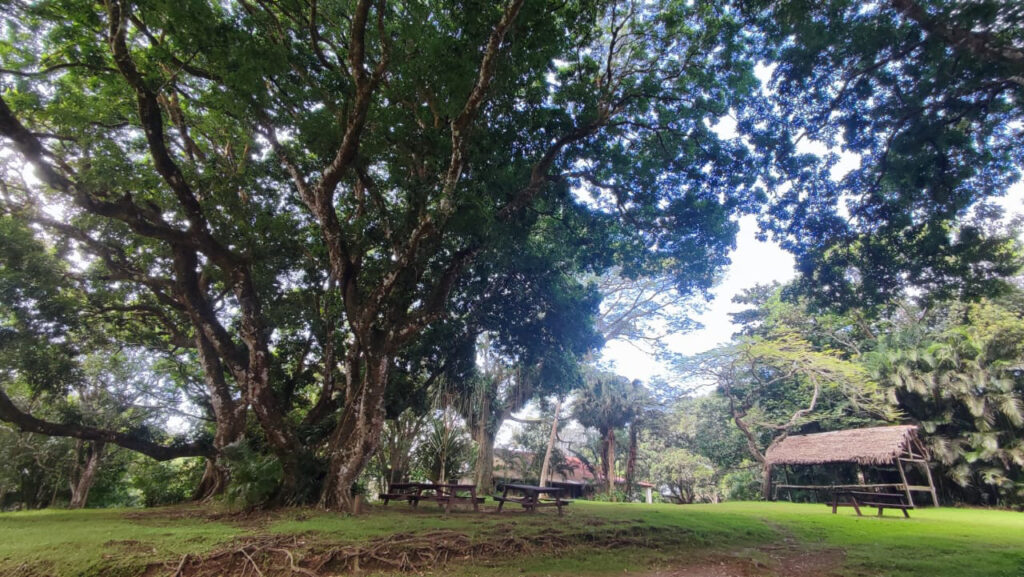
Flora and Fauna:
Nahampoana is best known for its lemurs, but is still one of Madagascar’s insider tips. Verreaux’ sifakas, collared lemurs and ring-tailed lemurs can be observed up close here. During the dry season, which is often long and harsh in the south, the lemurs are grateful for every sip of water. Bamboo lemurs and nocturnal mouse lemurs also live in the reserve.
Reptiles to be discovered here include the Reptiles to be discovered here include the southern Madagascar iguana, warty and giant chameleons (Furcifer verrucosus, Furcifer oustaleti), spiny-tailed iguanas (Oplurus cyclurus, quadrimaculatus and saxicola) and various geckos (Phelsuma modesta, Phelsuma lineata). The stars among the reptiles are of course the spider tortoises and radiated tortoises. Some shield lizards and skinks (Zonosaurus anelanelany, Tracheloptychus madagascariensis) cross the path of visitors, especially in the rainy season. The tree boa and Madagascar boas can also be found during this time. During the rainy season, you may even be lucky enough to spot the brightly coloured Madagascar frog Boophis rappiodes. A less colourful representative of the colourful frogs, Mantella haraldmeieri, also lives in Nahampoana. Nile crocodiles are also kept in a small enclosure all year round.
The flora of Nahamapoana covers the entire range of fruit and spice trees/plants used on the east coast of Madagascar, as well as a variety of indigenous plants. The area is known for the occurrence of the triangular palm (Dypsis decaryi), which is originally endemic here but has long since become a worldwide favourite as a living room plant. The Madagascan pitcher plant can also be found here in more humid forest areas. Typical of the south, baobabs and pachypodiums are of course also to be found in Nahampoana.
Nahampoana’s birdlife is just as worth seeing: Madagascar cuckoo hawks (Aviceda madagascariensis) circle above the trees in search of worthwhile prey. Madagascar white-eyes (Zosterops maderaspatanus), Vasa parrots, bee-eaters and paradise flycatchers can be found in the forest. On the banks of the river, you can spot Madagascar kingfishers (Corythornis vintisoides) and Humblot’s herons (Ardea humbloti). Green sunbirds and Souimanga sunbirds (Cinnyris notatus and sovimanga) fly swiftly between the blossoms of the trees. If you are lucky, you may also spot the Running Coua (Coua cursor), partridges (Margaroperdix madagarensis), Malagasy sacred ibis (Threskiornis bernieri) or crested ibis (Lophotibis cristata). A highlight are the pink flamingos (Phoenicopterus roseus) and lesser flamingos (Phoeniconaias minor), which can be seen from time to time in Nahampoana.
Picture of Eulemur collaris: Creative Commons Attribution 3.0 Unported, Alex Dunkel
 MADAMAGAZINE Your Magazine about Madagascar
MADAMAGAZINE Your Magazine about Madagascar
